Göta Artillery Regimental Library
A collection mainly on military organisation. The majority of the material is from the second half of the 18th century. Several of the works are rare and difficult to come by. Further, many of them are illustrated, and today, the collection remains a valuable addition to the library, with works on a subject that is otherwise sparingly represented in the holdings. The books have been intended for the education of the officers of the regiment, and treat older military organization which is now history.
About the collection
The library of the Göta Artillery regiment consists of a deposition that came to the University library in 1962, as well as an additional donation moved here from the Kviberg barracks in 2013. The former books have been dispersed into the general holdings of the University library, as was the custom at the time, while the additional donation has been held together and separately inventoried, according to later library practice. The below text is based, with much gratitude, on the excellent Läsning för krigare written in 1963, by Gösta Engström.
The 1962 deposition includes 162 works in a total of 338 volumes, 85 of which are printed before 1800, 42 between 1800–1825 and 35 after 1825. 192 volumes originally belonged to what was known as the von Platen library. A handwritten inventory of this library, begun in 1831, accompanied the deposition to the University library. This inventory is available in digital form in Gupea. It includes Swedish books, (20 titles in 54 volumes), Norwegian and Danish books, (2 titles in 4 volumes), German books (61 titles in 149 volumes), French books (38 works in 107 volumes), as well as a single volume in English. The order of the books is based on the language in which the respective books are printed, rather than their original language. For this reason, a number of English authors are still represented in the material.
The inventory of the von Platen library is a tête-bêche volume, the second half of it being the Catalogue öfver Kongl. Götha Artillerie Regimentes Bibliothek. The majority of the books in this inventory are part of what is referred to in a different inventory (currently held by the Swedish National Archives) as the Old Regimental Library. From this older collection, 22 volumes are found in the deposition made to the University library. Apart from the works in the tête-bêche inventory, the deposition includes another 79 worksin 124 volumes. 65 of these were donated by colonel Gustaf Adolf Fleming, the regimental commander in 1834–1840.
How the von Platen library came to the Göta Artillery Regimental library is not known. There are sources claiming that the collection was donated to the regiment by lieutenant Philip Peter Bogislaus von Platen (1801-1827), son of Baltzar von Platen. However, the von Platen library was not created by Philip von Platen, but by his grandfather, field marshal Philip Julius Bernhard von Platen (1732–1805). The latter authored some military works himself, including Der Husar in Felde, oder kurzgefasste Maximen des Husaren-Métier, which unfortunately is not present in the collection. Philip Julius Bernhard was not a bibliophile, but acquired a working library with the sort of books he needed for his service. To him, war was a field of science, which he studied in close detail. His books bear the traces of many extensive notes and marginalia.
The only English-language book in the collection is a biography from 1816, on Arthur Wellesley, Duke of Wellington. However, as previously mentioned, there are several originally English works in the collection, translated to other languages. It was not a lack of interest that prompted Philip Julius Bernhard to select his reading materials in this way, but rather his somewhat patchy grasp of English, which was less important in his time than it is now.
Subject-wise, the collection covers military history and military organisation, with some 60 works in each category, and about a third of the latter on artillery. Beyond this, the collection includes works on astronomy, military legislation, marksmanship and horsemanship, as well as a few periodicals, one of which originally belonged to von Platen himself: the Neues militarisches Magazin historischen und scientifischen Inhalt, issued in 1798–1805. Another periodical in the collection is the Magazin für Ingenieur und Artilleristen, the earliest (and most important) military specialist journal of the 18th century. Ten of its twelve issues can be found in the collection. They all concern artillery science and fortification. Many books cover the Seven Years' War, the French revolution (including some eyewitness accounts) and the Napoleonic Wars. Here, too, are several biographies of famous commanders, including the first edition of the classic Les reveries ou mémoires sur l’art de la guerre by Maurice de Saxe. Unfortunately, some of its pages are missing. Clausewitz is represented with three works, in the Hinterlassene Werke, published in 1832–1834. Further, there are many mathematical works, some of them with comprehensive sections on artillery and fortification. Other subjects represented are military architecture, pyrotechnics, cartography and surveying. The Swedish work Adelig öfning by Åke Klasson Rålamb is another book in the collection, in its three initial volumes published in 1690-91. These concern mathematics, heraldry and fortification, among many other things.
The majority of the works are from the second half of the 18th century. Many of them are now rare and hard to come by. When the collection came to the library, it was – and remains – a welcome addition to the holdings, which otherwise had little to offer on the subject of military organisation.
Gupea has inventories of the part of the collection that was deposited at the University library in 1962; Catalogue öfver Kongl. Götha Artillerie Regimentes Bibliothek and Catalogue öfver Platenska Bibliothek
Gupea has a separate inventory of the additional donation that came to the University library in 2013. The inventory was created in 2014.

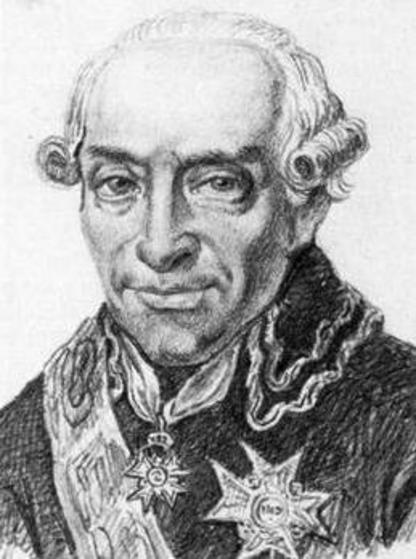
Access the collection
The collection is held in the closed stacks at the Humanities library. It is available for reading room use only.
Catalogue
The collection awaits cataloguing. The database post denotes the collection as a whole.
In Libris
In Supersök
Inventories
The 1962 deposition
In Gupea
The 2013 additional donation
In Gupea
Humanities library
Renströmsgatan 4
405 30 GOTHENBURG
Phone: 031-786 17 45

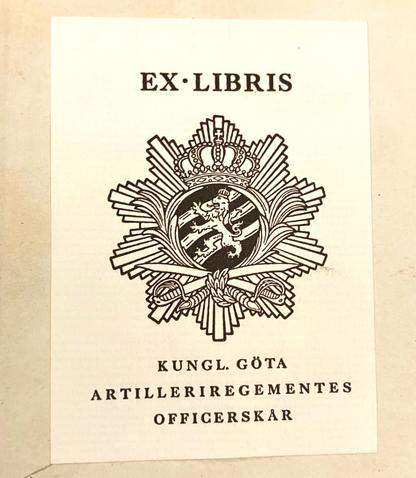
Text:
Anna Lindemark
Acquisition history
In connection with the closing of the Royal Göta Artillery Regiment, the regiment wished to ensure that the corps library and particularly its older material were taken in by a suitable institution. It was agreed the books would be deposited at the Gothenburg University library. In preparation of the handover, the books were outfitted with a special bookplate for the deposition. The regimental bookplate was already in the now twice marked material.
As part of the handover, the University library weeded from the deposition all titles that were already present in their own holdings. The only duplicates kept were older Swedish works. The deposition was signed in September 1962. However, the library's accession journals for this time and the months immediately following it bear no trace of the material, which was not considered an accession or a donation, but rather a deposition. It was dispersed into the holdings and is currently visible in Catalogue -57, though as yet lacking any notes on the provenance of the relevant works.
The additional donation, which has been referred to as the "Kviberg Collection" for the longest time, was donated in 2013 to the Gothenburg University library, from the Kviberg barracks, the LV6, in Gothenburg. A selection of the books included in the donation was kept by the University library.
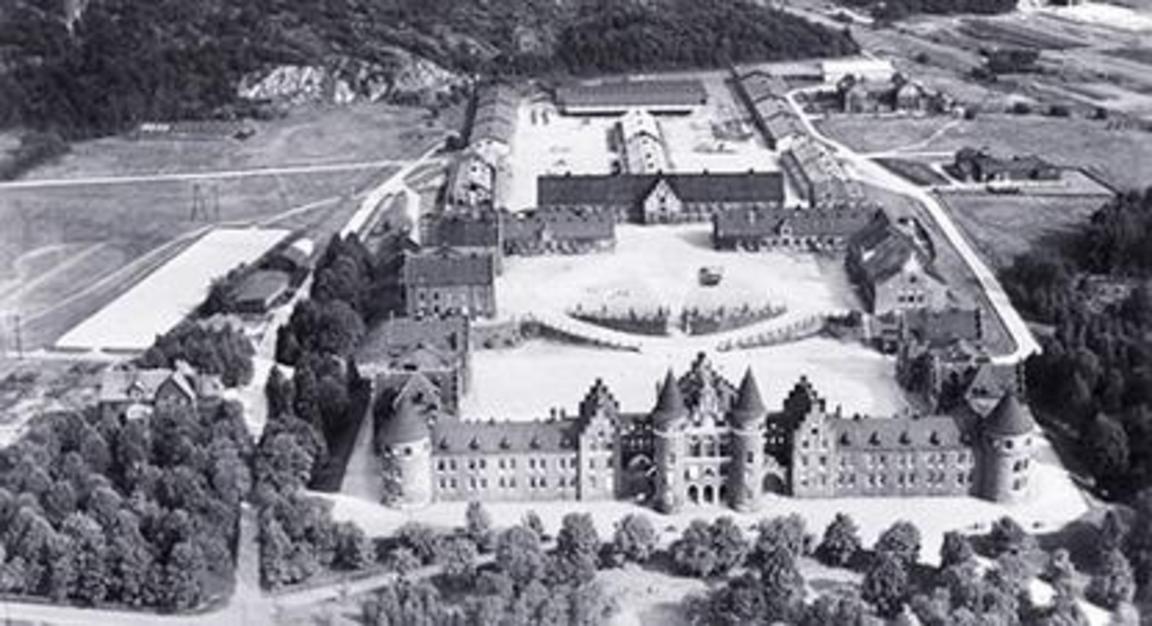
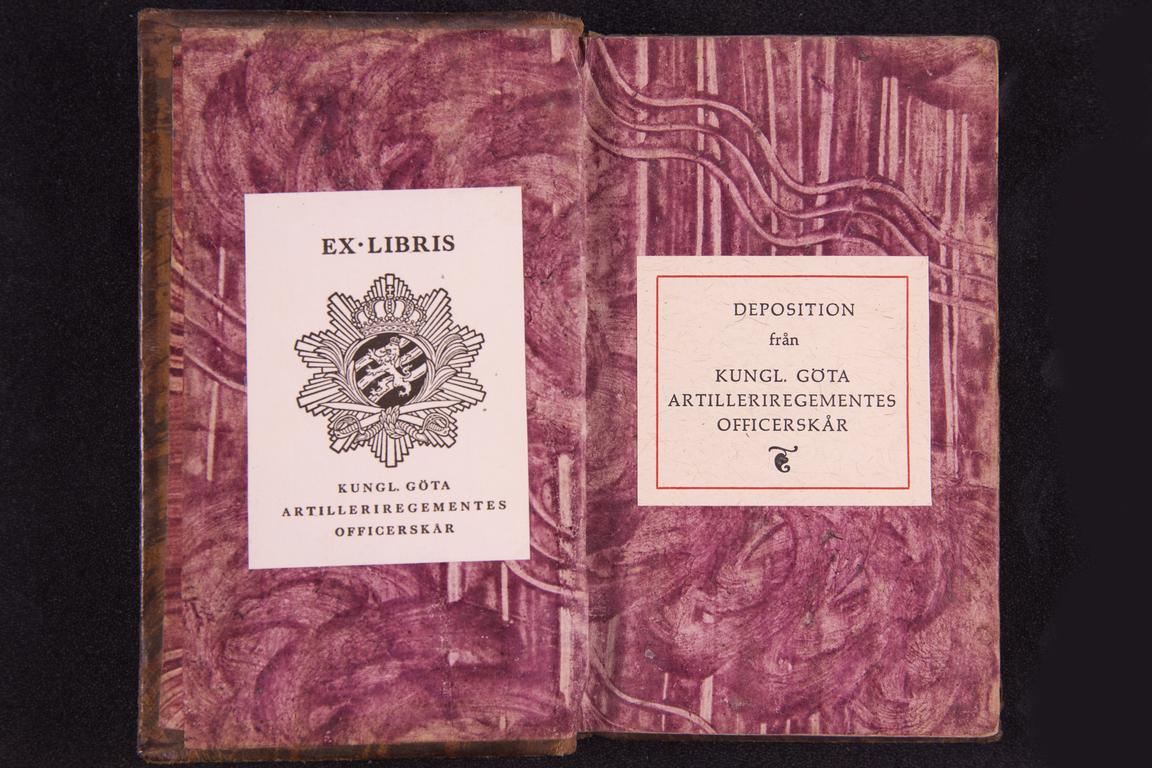
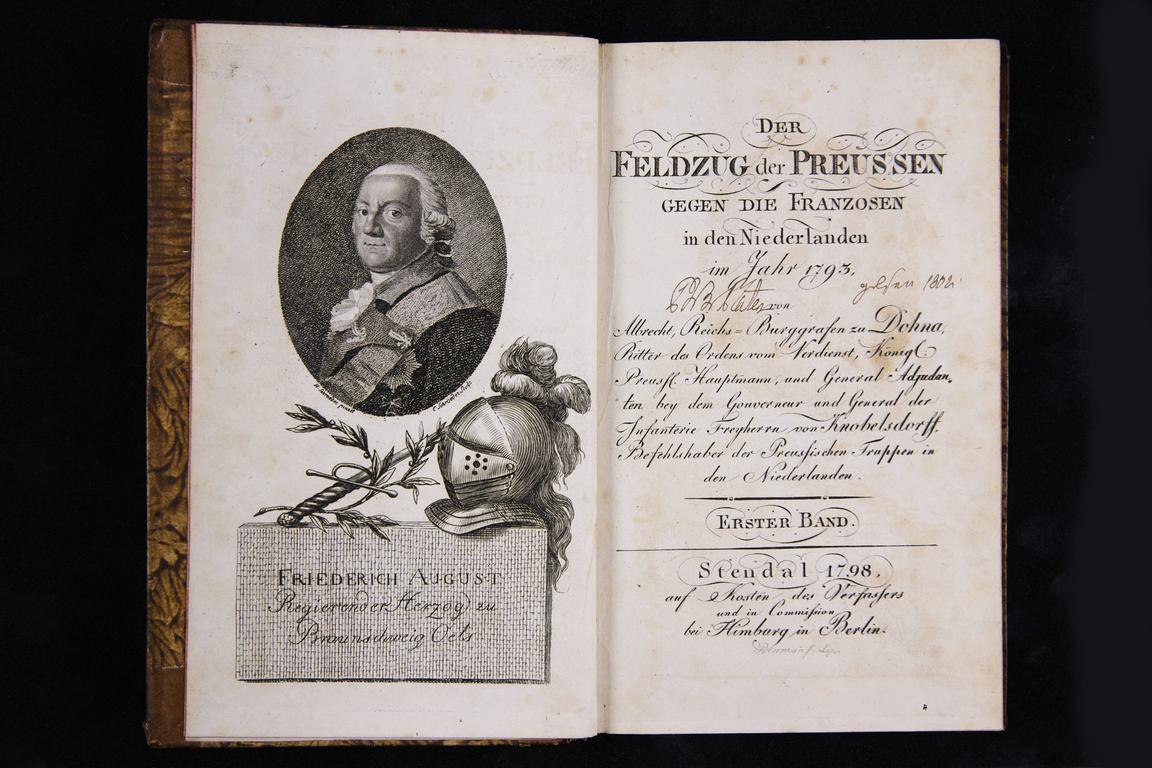
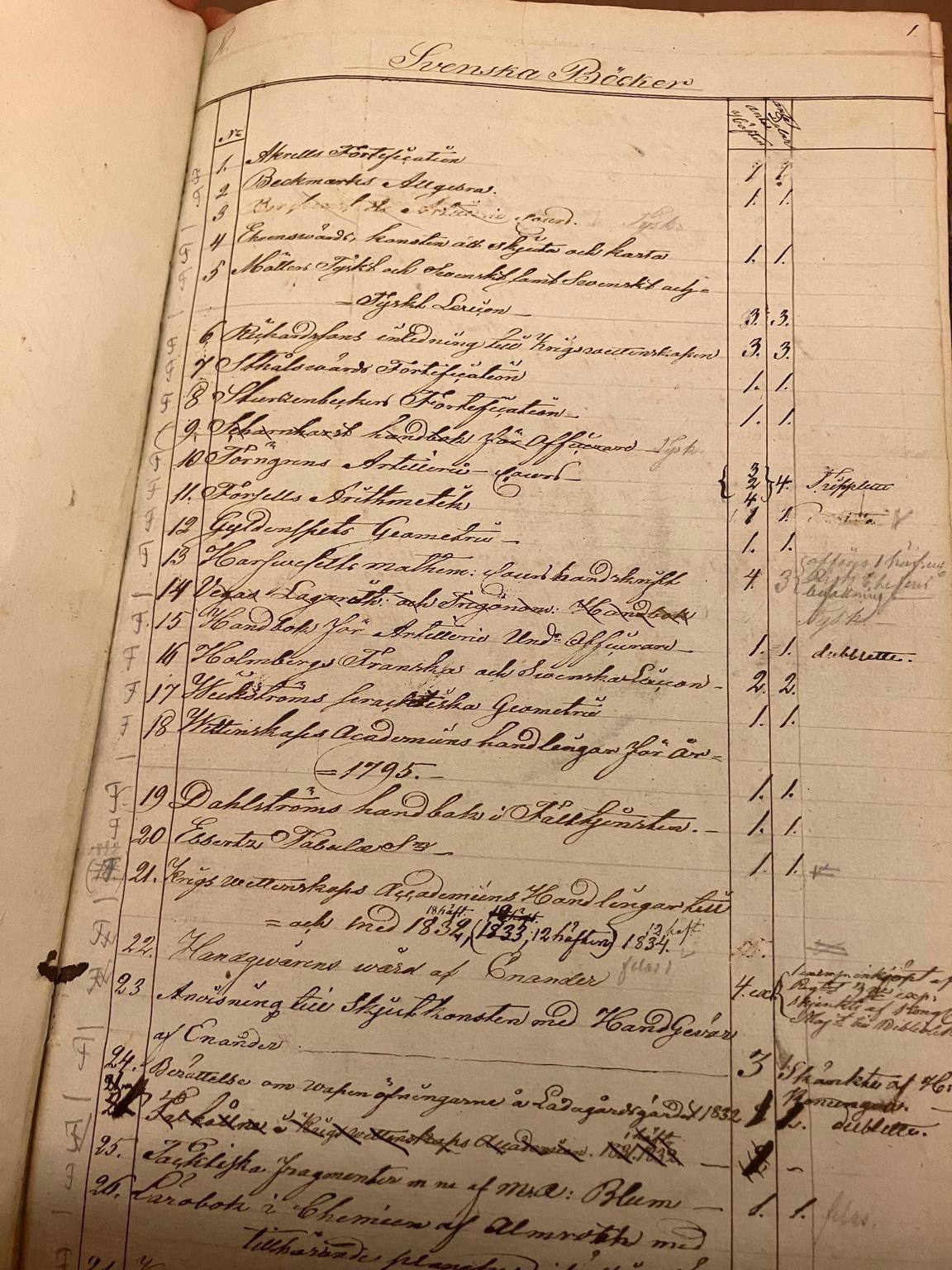
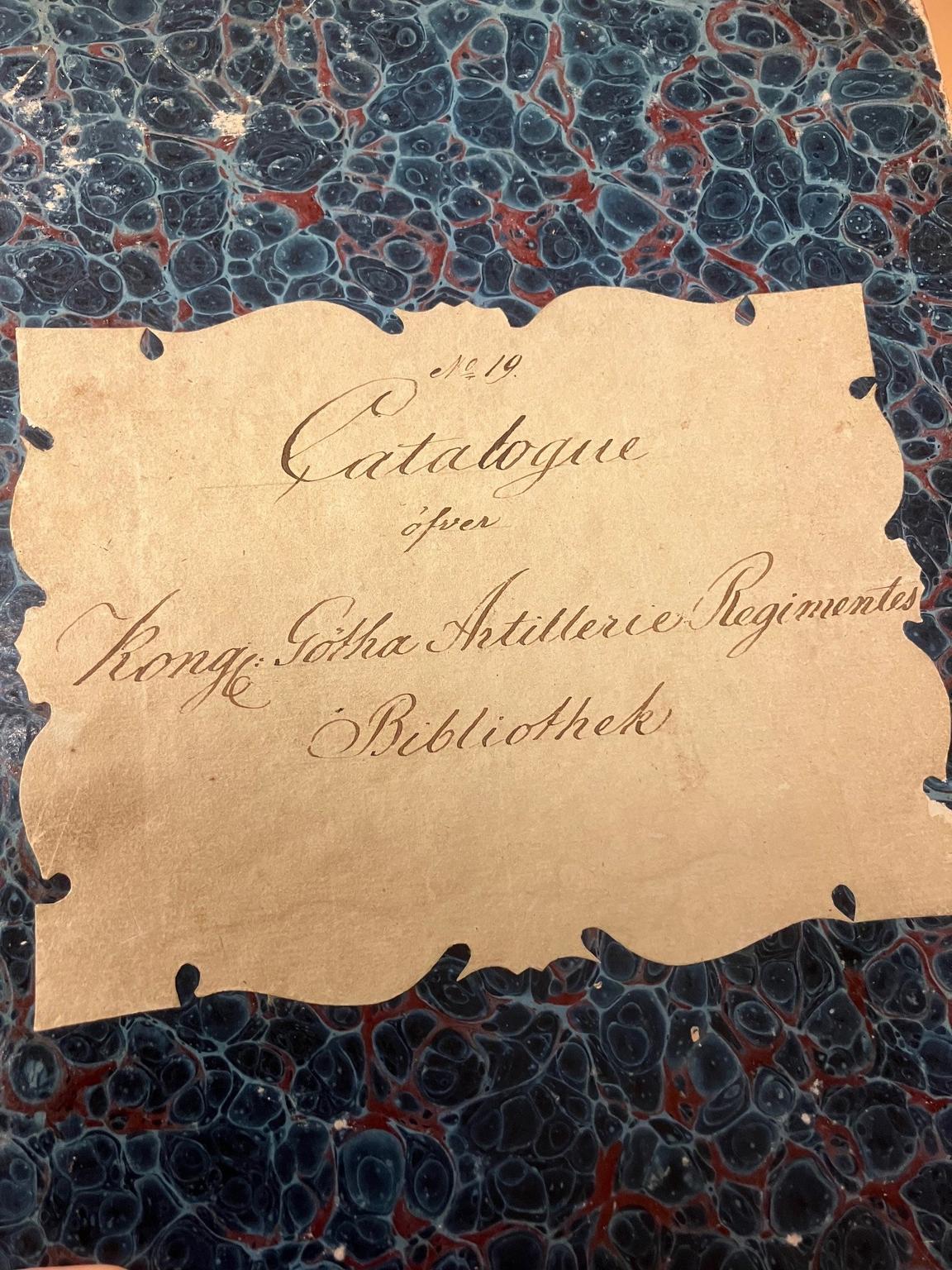
Read more
Läsning för krigare : anteckningar kring den Platenska samlingen och annat i Kungl. Göta artilleriregementets officerskårs bibliotek / Gösta Engström, 1963
On the Kviberg barracks, Wikipedia
Kvibergs kaserner : militär byggnation under ett sekel. – 1994.
Minnesskrift över Kvibergs militärhistoriska museum 1991–2013. – 2013
Suggested research topics
- An overview of the collection's contents. What is represented here, and how does it mirror the time and context of the material?
- Biographical research.
- Comparison with other, similar collections.
- Depictions of military organisation in older works.
- Instructive renditions of military subjects.
- Historical outlooks on fortification illustration.
- von Platen's marginalia. The books of Philip Julius Bernhard von Platen carry the traces of many margin notes that he made himself while reading his books. Frequently, he notes his own name, the date of reading, and details on potential rereading. Such notes are found in some 90 of the deposited volumes, from 1756 until 1804, the year of his death. The notes are generally made in the language of the book itself.
Please contact us if you have any suggested research topics you would like to share!